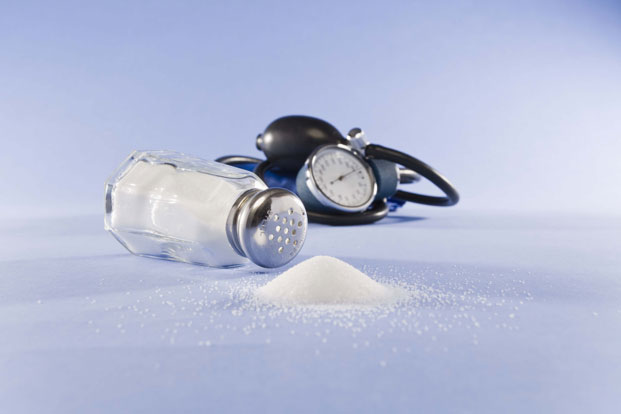They’re right behind you. Small and seemingly insignificant, the kidneys are two vital major organs located on both sides of the spine down near the small of the back. These bean-shaped organs help filter wastes from the blood and balance levels of minerals, water and salt.
Blood waste is carried out of the body as urine. Healthy kidneys also secrete a hormone that helps to control blood pressure; use Vitamin D to maintain bone health; guide in production of red blood cells; and maintain the balance of phosphorus, potassium and sodium. The kidneys cycle every 30 minutes, filtering blood in the body.
Kidney disease sufferers don’t excrete bodily waste completely, and dangerous levels of waste, electrolytes and fluid can accumulate.
Unfortunately, kidney disease isn’t really noticeable until it reaches a somewhat advanced stage. That’s when dialysis may be needed to help filter the waste from the body.
More than 25 million American adults have kidney disease, and many don’t even know it. It is one of the leading causes of doctor visits and hospitalizations for both men and women, with more than $85 billion being spent to treat kidney problems annually. Kidney disease is the ninth-leading cause of death.
Seven Steps to Kidney Health
To keep these vital organs in top shape, follow this advice:
1) Lose weight – We’ve all heard it before, but maintaining a healthy weight is definitely key to avoiding a host of diseases that attack the body’s major organs.
2) Take blood pressure medication – While working on shedding excess weight, doctors may prescribe medications that can lower the blood pressure and help the kidneys retain function. They may recommend a diuretic (or water pill) that will help with water retention.
3) Cholesterol medications – Doctors also may recommend statins, which are pills that work on lowering “bad” cholesterol, or LDL. This is the type that increases the risk of heart and kidney problems.
4) Lower protein in the diet – This helps to minimize waste in the blood and puts less pressure on the kidneys. This means less meat and more whole grains, fruits and vegetables.
5) Lower salt intake – Processed foods have a lot of added salt. By cutting back on canned soups, salty snacks, processed meats and cheeses, the kidneys won’t have to work as hard.
6) Less potassium – Again, the kidneys need a break, so even seemingly healthy foods can be working against them. High-potassium foods include oranges, potatoes, bananas, tomatoes and spinach. Have apples, carrots, green beans, grapes and blueberries instead.
7) Stop smoking and drinking to excess – The toxins of smoking need no explanation, but alcohol creates extra work for the kidneys. Cutting down or eliminating it will help filtration.
How Kidney Disease Develops
Diabetes and high blood pressure are influential factors in developing kidney disease, particularly coupled with the risk factors of a family history of kidney problems and the onset of old age at 60. If you smoke, are obese, have cardiovascular disease and prior history of kidney stones, the likelihood of damage to your kidneys increases.
While kidney disease lies undetected in many Americans, when it finally announces its presence, it arrives with a vengeance.
Signs include extreme fatigue and weakness; painful urination and straining to urinate; foamy urine; dark urine (caused by blood in the elimination); a frequent need to urinate; puffy eyes; swelling in the ankles, feet, abdomen, hands and face; and increased thirst.
Sufferers also experience nausea and vomiting, a loss of appetite, lack of concentration, hiccups, muscle cramps or twitching, a shortness of breath and sleep problems, typically because of frequent urination in the middle of the night. Because kidneys can accommodate some loss of function, many symptoms occur only in the end stages.
Causes of Kidney Disease
Kidney disease is hard to detect because many of its symptoms are not easy to determine without professional medical attention. Diabetes, high blood pressure and heart disease are usually silent problems until they are advanced. Thus, more than 450,000 Americans are on dialysis, while close to 200,000 have undergone kidney transplants. More than 100,000 people are on a waiting list for a kidney transplant, with about a dozen dying each day because no donor was available. Treatment for kidney disease will try to arrest its progression. That’s typically accomplished by trying to get the patient to lower blood pressure, treat diabetes, lose weight and exercise.
Fortunately, the cures for kidney problems are the same as any measure of good health. The methods will try to control the conditions that can cause someone to develop diabetes and hypertension, namely excess weight and lack of exercise. The goal is to reduce underlying causes of kidney damage and ease their burden.
Beyond diabetes and blood pressure, there are some other diseases that can cause impaired kidney function. These are typically diagnosed with lab tests. They include glomerulonephritis, which is an infection and inflammation of the filtering units on the kidney; interstitial nephritis, which is inflammation of the surrounding structures of the kidney and its tubes; polycystic kidney disease, which is, as its sounds, the development of cysts in the kidney; kidney stones that block the urinary tract or cancers that develop in that area; vesicoureteral reflux, a disease in which urine backs up into the kidneys; and general recurring kidney infections, called pyelonephritis.
Because kidney disease sneaks up on many people, the time to implement the plan is now. Don’t wait until dialysis is the only option. Work on becoming a healthier person through diet, exercise and cutting back on bad habits, and the kidneys will have an easier time of providing the necessary tasks.

Leave a Reply